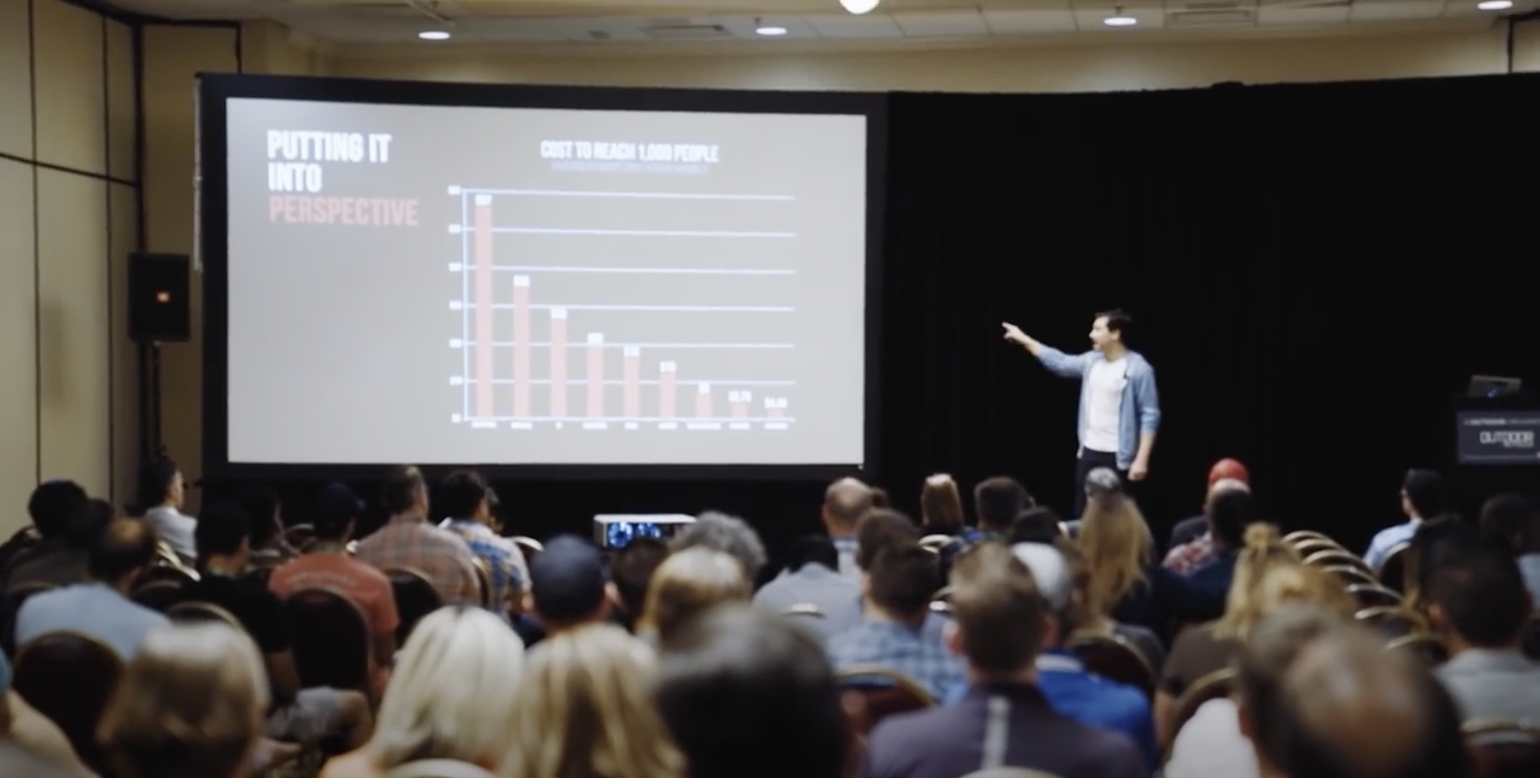Why Your B2B Sales Process Drags for Months on End
If your B2B sales process is dragging on for months on end, then you’re doing something wrong.
GASP!
Despite the fact that it takes sales teams an average of 4 months to reach a closed deal, that doesn’t mean that long selling processes are normal.
If you’re one of the many salespeople whose sales process typically lasts for months, know that the longer your process is, the:
- More anxious you’ll feel;
- More your potential customers will lose interest; and
- Lower the odds that you close deals!
That said, we’re sharing exactly why your processes drag on for an unnecessarily and unbearably long period. On top of that, we’re sharing exactly what you can do to start shortening up the process and foster an overall better selling experience.
Nobody likes a long selling process- not you, your team members, or your B2B leads! Therefore, you need to turn things around before everybody crashes and burns.
How Long Should a B2B Sales Cycle Be?
A few days to a few weeks. That’s it.
Believe it or not, you don’t need to spend months or even weeks on end trying to get your prospects to sign on the dotted line!
Don’t believe it?
It’s probably because you’re used to seeing other B2B businesses lose their minds trying to sell for months on end. Or maybe it’s because you were taught in business school or in a shoddy B2B sales training program that it’s normal.
Once again, just because everybody else is doing something doesn’t mean that you should do it or it’s normal!
Saying that it’s normal to spend months trying to close a deal is like saying it’s normal for people to be sad and upset all the time. While the average person might find themself sad and upset on a regular basis, that doesn’t mean it’s normal or healthy!
The length of your selling process will vary depending on the size of the B2B company you’re selling to. Because the larger the company, the more decision-makers involved, and the longer it typically takes to navigate the situation.
However, never use company size as an excuse for why your selling process is so long.
At the end of the day, large B2B companies need solutions just as quickly as small and medium-sized B2B companies, so don’t start making excuses for your long cycles!
Bottom line: B2B sales cycles or processes don’t need to take longer than a few weeks. Anything longer than that is entering dangerous territory (AKA, you’re more likely to lose your mind and the deal)!

What the B2B Selling Process Should Look Like
Instead of having an insane multi-step process that includes jumping through hoops, hopping over landmines, and shooting arrows, you need a simple, straightforward selling process.
Whether you want to admit it to yourself or not, the standard run-of-the-mill 5-to-7 step B2B selling processes are NOT simple or straightforward.
Believe it or not, the most basic selling processes foster the best buying processes for customers!
In sum, when your process is short and sweet, both you and your customers win!
So, here’s what your B2B selling process should look like:
- Lead generation - Siphon leads into your sales pipeline via cold calling, cold emailing, referrals, and inbound marketing
- Qualify leads and hook their interest - Ensure the lead is a qualified lead and start adding value to their buyer’s journey
- Analyze the state of their pain points and propose solutions - Show B2B leads the path forward
- Close - Final sales pitch to close the deal
That’s it.
Again, the key difference between run-of-the-mill selling processes that last for months and this shortened version is that the one is as straightforward as can be.
When your process is straightforward, both you and your leads get your needs fulfilled.
Here’s Why Your B2B Sales Process Drags on Forever
Without going any further, here are the exact reasons why your B2B sales process drags on for an unnecessarily and unbearably long amount of time.
If you’re tired of spending months on end trying to close deals (only to end up being disappointed much of the time), these reasons explain exactly why that's happening.
No more spending months trying to close deals. It’s time to maximize your time to close more deals in less time and with more ease than ever before.
You Don’t Have a Repeatable Process
To begin with, what makes you think that you’ll have a predictably short selling process if you don’t have any process at all?
Trying to sell without having a process is like trying to drive from your house to a destination you’ve never been to before without using GPS. Sure, you might eventually make it there, but you’d get there much faster and easier if you would just plug the address in!
Believe it or not, many B2B sales teams literally have no process then wonder why it’s taking seemingly endless time to close deals!
Without a solid, repeatable process, the only prediction you can make is that it’ll take way longer than necessary to close on potential customers.
Show Up Totally Prepared
Would you show up to a test believing that you’ll ace it without having studied at all? Hopefully not!
Therefore, you shouldn’t plan on kicking off the selling process and expect to close it in a matter of weeks if you haven’t prepared a methodology to do it.
In addition to developing a solid, repeatable process, you and your sales team also should prepare:
- An ideal prospect profile (IPP) for ideal companies in your target audience;
- An ideal buyer persona (IBP) for the stakeholders who have the authority to make purchasing decisions; and
- Solid inbound marketing content that enhances your prospect’s buyer’s journey.
In addition to having a process prepared, having these three sales tools ready to go will make your life easier and enhance the lead’s buying experience.
Being Indirect
On a scale of 1 to 10, how much do you hate having your time wasted?
Unless you’re trying to stall a situation, then you probably despise having your time wasted. Not only do you despise it, but so do your new leads!
Therefore, instead of wasting time by beating around the bush, be totally direct throughout the selling process. By that, we mean:
- Having an assertive sales approach;
- Going straight to the decision-makers; and
- Telling leads exactly what they need to hear.
Unless you’re completely direct with leads, then you’ll likely end up wasting a lot of unnecessary time and elongating the heck out of the selling process.
Go Straight to the Decision-Makers
First off, being direct starts with going directly to the top of the food chain. By that, we mean targeting outbound outreach directly at the top stakeholders at your target B2B companies.
When you sell directly to the decision-makers, you cut out all the people who would normally have to confirm purchasing decisions with these stakeholders before giving you a firm yes.
If you’re targeting small to medium-sized companies, then there are usually fewer decision-makers to target, which makes your outreach process much simpler.
Unfortunately, many sales reps bypass reaching directly out to the lead decision-makers because they believe that it’ll be nearly impossible to get a response from them. However, you’d be surprised at just how many deals are closed in a near-instant thanks to targeting the decision-makers right off the bat.
Always Tell the Truth
Would you believe me if I told you that many B2B salespeople regularly lie to their potential customers? While it’s a hard truth to swallow, it’s a more pervasive issue than you probably think.
What exactly are sales reps lying about?
They’re not telling leads the full extent of their pain point and the toll it's taking on their company. On top of that, they’re not telling them the impact that not solving the pain point will take on their business.
The reason they’re lying is that they believe that being indirect will make prospects like them more. They believe that, if they tell prospects the honest facts, it’ll turn them off completely.
However, not telling the truth for the sake of momentary comfort only elongates the sales process and fosters a terrible customer relationship.
Think of it like this: If you were at the clinic with debilitating knee pain and the doctor didn’t explain to you the full extent of the problem and the toll that it will take on your body, wouldn’t you be upset? While the truth might be difficult to swallow, wouldn’t you be thankful to know the hard facts of the situation?
Never sacrifice the full truth for momentary comfort. Lying or beating around the bush never leads to anything good.
Handing Out Proposals
Want to know the most pointless and indirect B2B sales technique of all? It’s handing out free initial proposals to new leads.
Seriously, handing out proposals is like:
- Asking leads to ghost you;
- Asking to have your time and energy wasted; and
- Turning the selling process into a months-long ordeal.
Handing out free proposals is standard B2B sales practice. However, if proposals are so effective, then why do so many sales teams have such a difficult time closing deals?
Straight-up: Stop handing out proposals because they won’t do you or your leads well.

Letting Prospects Control You
Letting prospects control the selling process is like asking a three-year-old what they want to eat for lunch. They’ll spend an exceedingly long amount of time coming up with an idea only to have it be something you don’t have in your fridge.
Rather than letting the toddler tell you what they want to eat, you simply need to put something on their plate and call it a day! That is, at least, if you want to avoid a headache and spend all day waiting for them to make a decision.
Unfortunately, many sales reps let prospects control the entire selling process. Not only does this cause an unnecessarily long process, but it usually never ends in a closed deal.
Prospects Don’t Know What Their Pain Points Are
To put it simply, prospects literally have no idea what their pain points are or how to solve them.
If they did, then you would serve no purpose in their life, because they would solve their problems before you can step in and do it!
Therefore, letting prospects control the selling process is completely backward!
It’s like letting a toddler be the boss of you: They don’t know what’s good or right for them, yet you’re letting them take control.
Unless you step up and control things, the selling process will last forever because prospects have no idea what’s good for them.
Prospects Have a Monkey Mind
Not only do prospects not understand their problems, but they also have their own mind working against them. More specifically, they have a monkey mind!
Think of the monkey mind like this: How often do you walk into a restaurant thinking you know what you want to eat. But then you take a look at all of the menu's options only to get overwhelmed. Ultimately, you spend an exceedingly long amount of time trying to make a decision because the waiter never steps up and makes recommendations.
Unless you step in and take control, the prospect’s monkey mind will. And nothing good ever happens with the monkey mind has power.
Shoddy Follow-Up
After making your initial cold call or email, how long do you usually wait before following up? 1 day, 2 days, or even 3 days?
After making your initial cold outreach attempt, you should wait no more than 24 hours before reaching out again. If you still don’t hear back, follow up again within 12 hours.
Unless you’re consistent and diligent with follow-up, then your lead gen process will drag on for weeks and probably result in zero responses from cold leads.
Follow-Up Within 24 Hours
Again, your goal is to follow-up within 24 hours of the initial outreach attempt, and then follow-up a second time within 12 hours if you’re still not getting a response.
Why do you need to follow-up so quickly?
In addition to keeping the selling process moving along, rapid and consistent follow-up is crucial for several reasons, including:
- It keeps the prospect interested;
- It prevents the prospect from getting distracted; and
- Shows that you’re serious about helping the prospect.
You can have the most perfect sales strategy that includes all the best sales tools, but if your follow-up is weak, then it all goes to waste.
Follow-Up Until They Respond
Take a moment to put yourself in your potential customer’s shoes. If you had a business problem that was unknowingly reaping havoc on your company, wouldn’t you want somebody to point it out? Wouldn’t you appreciate an honest professional helping you devise an honest plan to solve the issue?
If you genuinely care about your business’s success, then of course you would!
That being said, continue to follow-up with prospects until they respond. If you feel bad doing so, then remind yourself that you’re honestly trying to help them.
If the prospect is getting annoyed with you and your regular messages, then they’ll tell you! But until that point, continue to follow-up.
Selling Facts Instead of Emotions
Whether you want to admit it or not, we all make purchasing decisions based on emotions. Despite the fact that we all like to think of ourselves as highly logical individuals, we still buy on emotions.
Therefore, laying all the facts and tech specs of your product or service on the table and thinking that they’ll lead to a closed deal is pure nonsense.
Instead of appealing to the prospect's logic, appeal to their emotions. That isn’t to say that you shouldn’t lay all the facts on the table, but it is to say that you shouldn’t put the facts on the table and think that they’ll help you close a deal.
The longer and harder you sell facts instead of emotions, the longer the selling process will drag on.
Bottom line: Facts tell, emotions sell!
Urgency & Enthusiasm
So, which of your prospect’s emotions should you be hyping up the most?
Simple! Focus on hyping up their sense of urgency and enthusiasm.
Why would a prospect make a purchase unless they feel as if there’s something at stake? More specifically, why would they buy something if they don’t feel as if they’ll lose out on something important if they don’t buy it?
To hype up a sense of urgency, show B2B buyers that their business goals are at stake if they don’t purchase your product or service.
Second, hype up your prospect’s enthusiasm by showing them that your product or service will bring them closer to manifesting their business vision. Nothing gets a potential new customer more enthusiastic than knowing that they’re leaping toward their vision.
The combo of urgency and enthusiasm is like a match made in sales deal heaven.
Fearing Everything
Are you one of the many business-to-business sales pros who are genuinely afraid of selling?
For example, does making a sales post on your LinkedIn account strike a nerve? Or, does picking up the phone and making a sales call freak you out?
If so, your fear not only elongates the selling process, but it drives new customers away.
Whether you’re aware of it or not, your fears create negative energy, and that negative energy is sensed by anyone who encounters you.
Therefore, unless you turn fear off, then you’ll continue to create negative energy. The longer your energy radiates and the more potent it is, the longer it’ll take you to convince prospects that you’re capable of solving their problems.
Fear Is Infections
Like any emotion, fear is energy, and all energy is infectious.
How many times have you made a run-in with somebody who immediately turned you off? Was there just something about them that instantly took your mood from 100 to 0?
If so, it’s likely because they were infecting you with their negative energy. For whatever reason, they were feeling a negative emotion which subsequently made you feel negative.
Instead of radiating fear and inevitably turning potential customers off, radiate confidence to keep them in the palm of your hand.
-Mar-16-2022-11-56-30-25-PM.jpg?width=900&name=1%20(1)-Mar-16-2022-11-56-30-25-PM.jpg)
Not Delegating to Your Sales Team
Are you an admitted sales-control freak?
Are you afraid of sharing sales responsibilities with your team members out of fear that you won’t reach quota?
If so, then your control-freakiness stops here and now!
Unless you want to overwhelm yourself while turning your process into a months-long ordeal, then you have to divide and conquer.
And if you’re thinking to yourself that your sales team isn’t trained well enough to manage the process, then the answer is sales enablement, not being a control freak!
You Should be Focused on Leading
Not only does delegating pieces of the sales process prevent it from getting exceedingly long, but it also fosters overall business success.
As the leader of your company, you must be focusing on the absolute most important sales success factors, namely:
- Existing customer success;
- Closing the biggest deals; and
- Maintaining long-term customer relationships.
When it comes down to it, sales is the defining factor of overall business success. Think about it: Without solid sales results, you never manifest your business vision!
Therefore, in order to manifest the best sales results, you need to be focusing on the factors that matter most. To do that, you have to willingly let your sales team members come in and help. Unless you start delegating, you’ll eventually hit a sales plateau, or even see negative sales growth.
Final Thoughts on Why Your Selling Process Drags on Forever
Ultimately, your B2B sales process drags on forever because of your own faults. While it’s a hard pill to swallow, being accountable for the situation puts you in a position of power to fix it.
The bottom line is that nobody likes a long selling process.
The solution is to simply stop making them so unbearably long! Not only will shortening the process make you, your team members, and potential customers much happier, but you’ll close more deals in less time and prospects will be on their way to getting their pain point solved in no time!
You May Also Like
These Related Articles

10 Reasons Why You Should Trash Your B2B Sales Funnel

10 Killer B2B Sales Tactics that Take 10 Minutes or Less!




